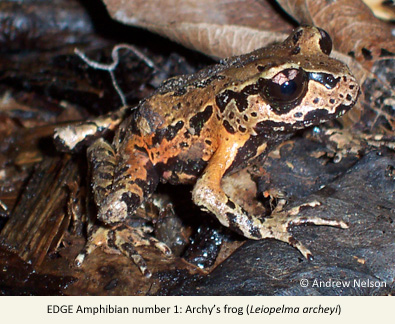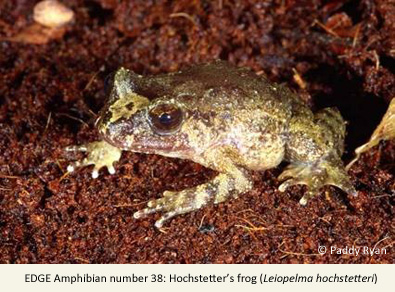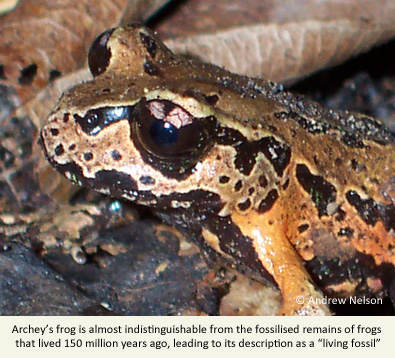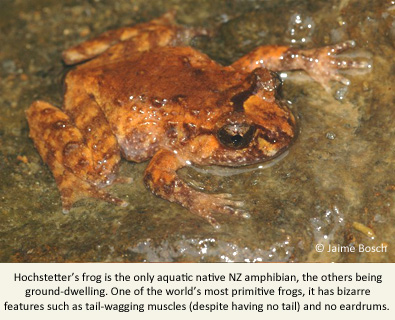In fantastic news for nature conservation, the New Zealand Government announced today it has abandoned plans to mine 7000 hectares of land protected under Schedule 4 of the Crown Minerals Act, including strongholds of two top priority EDGE Amphibians.

Energy and Resources Minister Gerry Brownlee and Conservation Minister Kate Wilkinson declared that the government has decided not to remove any land from Schedule 4 of the Crown Minerals Act (which provides protection) for the purposes of further mineral exploration or extraction.
Numerous rare species were threatened by the proposal, including top priority EDGE Amphibians Archey’s frog (Leiopelma archeyi) and Hochstetter’s frog (L. hochstetteri). These prehistoric frogs have survived mass extinctions and represent half of New Zealand’s native amphibian fauna, but are currently struggling to cope with increasing human pressure. Years of work have gone into preventing the extinction of these remarkable frogs, so it is fantastic that these efforts have not been in vain.

The areas proposed for mining exploration included several long-term frog monitoring sites representing over 40 years of the best data on frog populations anywhere in the world. In addition the proposed mining area includes the ‘type’ locality of Archey’s frog (Tokatea on the Coromandel Peninsula) and Hochstetter’s frogs (Coromandel Peninsula). Archey’s frogs only occur in two areas and the Coromandel is considered the ‘stronghold’ population.
The government received 37,552 submissions on its discussion paper. “The vast majority of submissions were focused on the proposal to remove 0.2 per cent of land from Schedule 4 to allow for wider mineral prospecting on those sites,” Mr Brownlee said. “Most of those submissions said we should not remove any land from Schedule 4. We heard that message loud and clear.”
Ms Wilkinson said the government had agreed to continue with its proposal to add 14 areas totalling 12,400 hectares of land to Schedule 4. In addition, in the future all areas given classifications equivalent to current Schedule 4 areas (such as national parks and marine reserves) will automatically become part of Schedule 4, receiving the protection listing provides. Ms Wilkinson also confirmed that the idea of mining in national parks in New Zealand was “off the table”, now and in the future.
This decision represents a fantastic victory for the conservation of these ancient frogs, but actions are still required both within and beyond protected areas to guarantee the survival of these species. We look forward to supporting continued efforts to protect the New Zealand frogs.
You can support conservation of the world’s most unusual threatened species by donating here.

